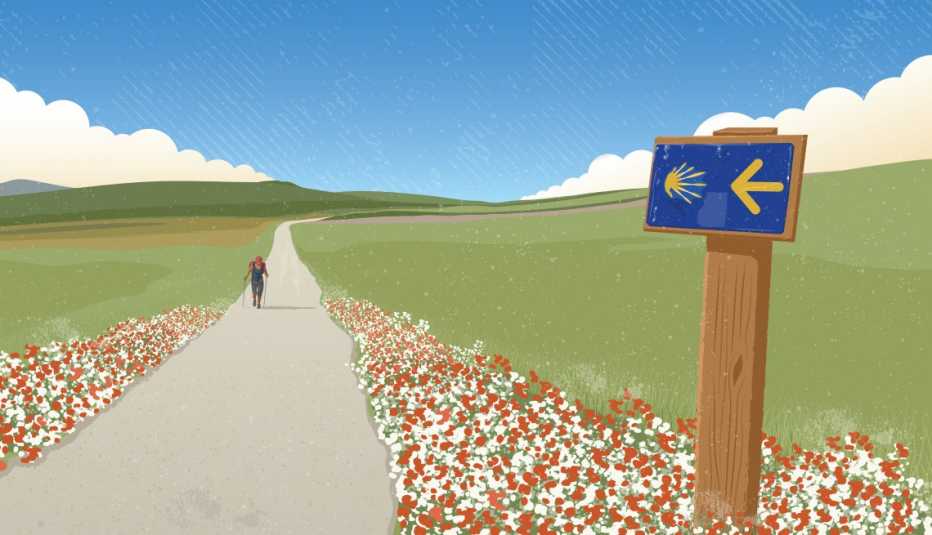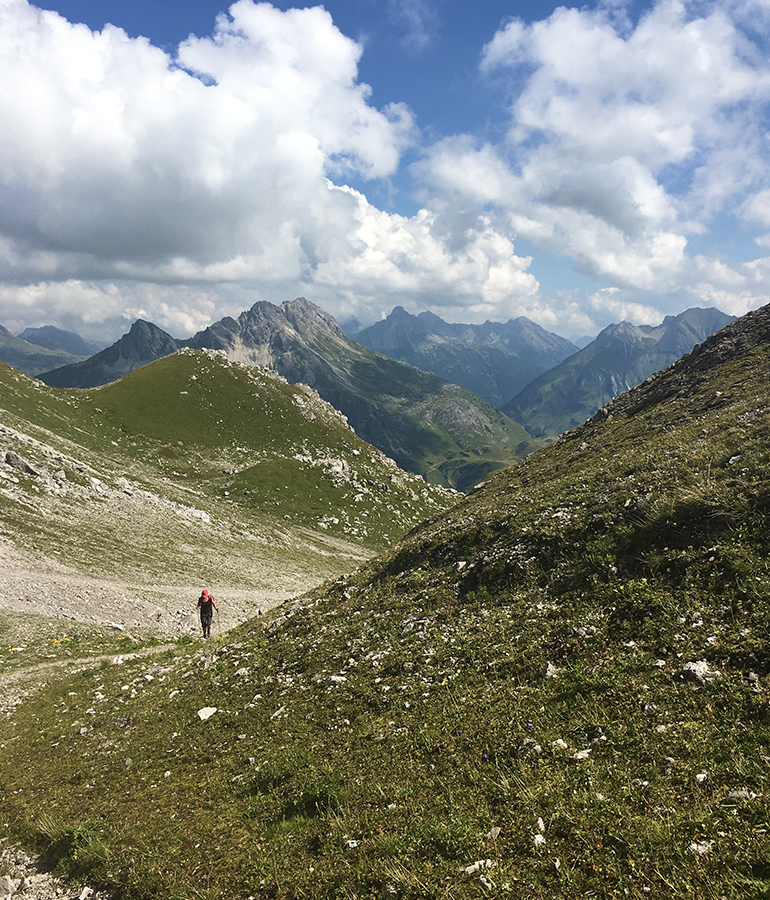Staying Fit


“Slow down, this isn’t a highway. You aren’t a car,” says my guide, Jorge Granda, as I rush down a rocky road, thrusting my walking sticks dramatically, hardly noticing the vineyards on one side and the fields of Spanish gold broom and purple heather on the other. Ahead, a tumbledown bridge blocked by cows and sheep has my attention.
“They’ll move,” continues Jorge, unperturbed. “Listen to the birds instead — feel the wind, smell the flowers.” He then hands me an apple from a fruit-filled box a friendly farmer has left on the roadside for hikers.
“Buen Camino,” reads the farmer’s sign, the words messily scrawled on cardboard. “Good journey,” translates Jorge.
As a pilgrim on the Camino Frances, one of the many paths throughout western Europe leading to Santiago de Compostela in northwest Spain, I’ve been hearing hikers greet one another with those words each day. It makes for an instant connection with a stranger that feels nearly sacred because it acknowledges the quest you’ve both undertaken, a journey millions have tackled over a millennium, originally to pay homage to the relics of the Apostle St. James the Greater. According to legend, his remains were brought to this Galician city from Jerusalem and buried at the site where the Cathedral of Santiago de Compostela now stands. Ever since, believers have been making the pilgrimage to the city as a form of penance and to seek forgiveness for their sins, although people with all types of beliefs now do it for reasons often not related to religion and their offenses — some fitness buffs make the trek for the physical challenge.


I’ve made the pilgrimage multiple times. For me, the walks are spiritual (not necessarily religious), contemplative experiences that bring much peace of mind. As I step one foot in front of the other on paths so many have walked for centuries, the history is palpable and comforting, somehow making me feel connected to the human race — a connection that fuels me and gives me strength.
Sometimes I walk alone, periods during which I test my self-sufficiency and gain confidence that I can overcome obstacles. Being solo also gives me quiet time to mull over my interior landscape, to get into my own head and come to grips with long-buried emotions, conflicts, memories or thoughts. Other times, I’m trekking with strangers, periods in which I embrace vulnerability. I’m always surprised at how fast a safe intimacy develops, prompting me to trust these strangers with my secrets, and vice versa. It’s these very conversations that help spark transformation. People learn from one another. Just as fascinating, I’ve walked with a single pilgrim for eight hours and never uttered a word — yet felt buoyed by the person’s pace or energy.
When I make the walk in good times, I find myself focusing on the beauty of life and fully appreciating all my blessings. In dark periods, those times I’m struggling with a problem, I can tune out on all the distractions and noise of the outside world, go inward, and really think through an issue and find solutions. Those walks have helped me heal my heart and soul, and even helped me get clarity in my marriage.
Cutting it short
As a travel writer specializing in Europe, I typically make several trips across the pond every year (before COVID), one reason I’ve been able to do the Camino on several occasions. I’m already there. But there’s another reason, as well: I’ve always done it my way. Rather than spend the five weeks trudging the approximately 500 miles that compose the most popular route — one that begins in France, just across the border from Spain — I’ve hiked only portions of the various paths to the cathedral, sometimes never even making it into the city and to the sacred church. I’ve never spent more than 10 days on a trail, and sometimes I’ve simply walked for an afternoon. With children to raise, a job and other responsibilities, I’ve never felt I could withdraw from my busy life for the long-haul journey.




































































You Might Also Like
Through Travel Comes an Understanding of Your Family’s History
For a longtime writer, visiting homelands brings the pastIn This Life’s a Journey Essay, a Lighter Agenda in Paris Proved Best
Trip opened traveler’s eyes to another side of the city many never see
More Members Only Access
Watch documentaries and tutorials, take quizzes, read interviews and much more exclusively for members